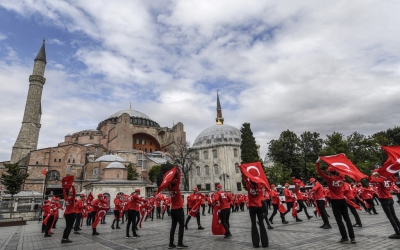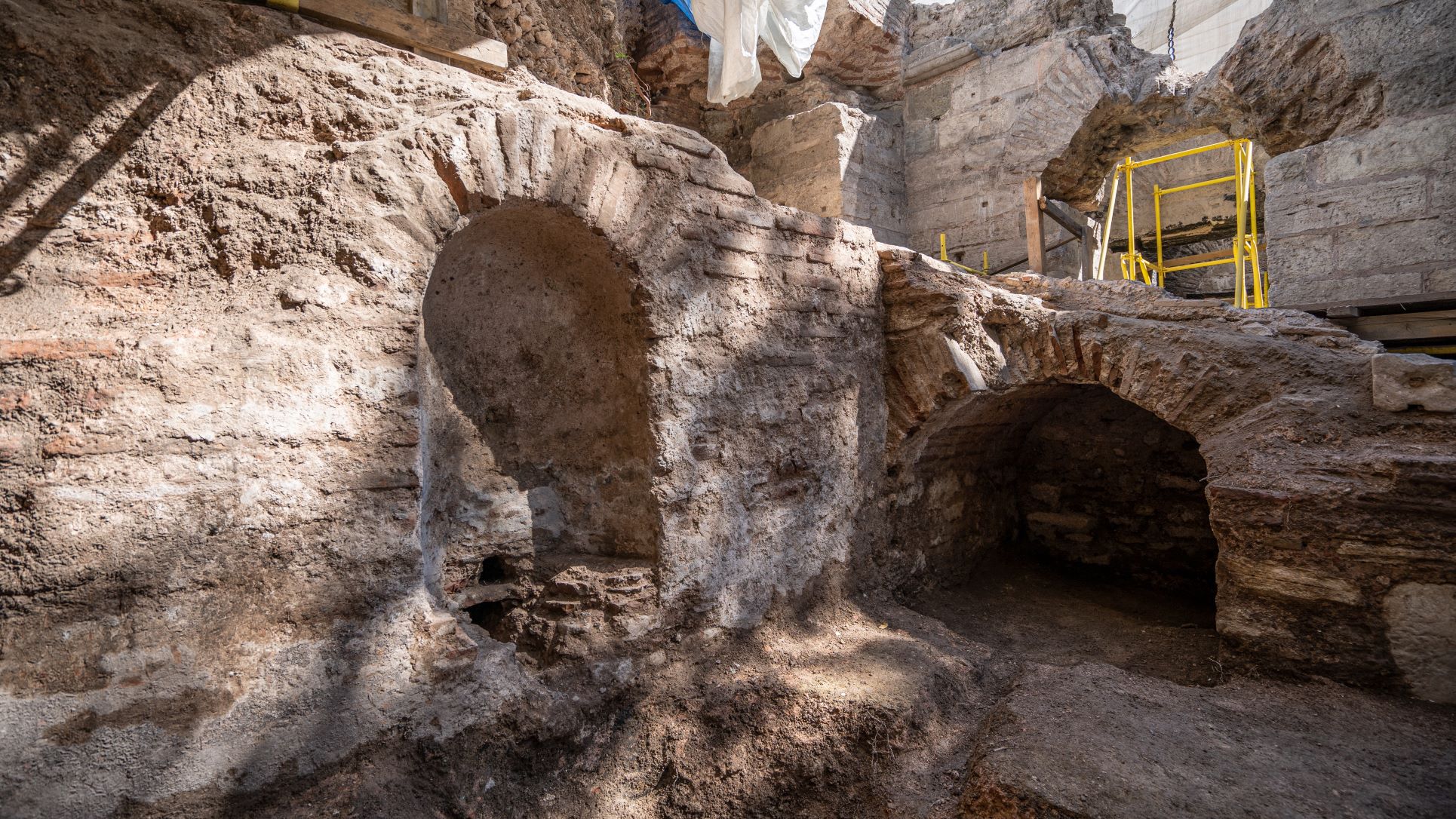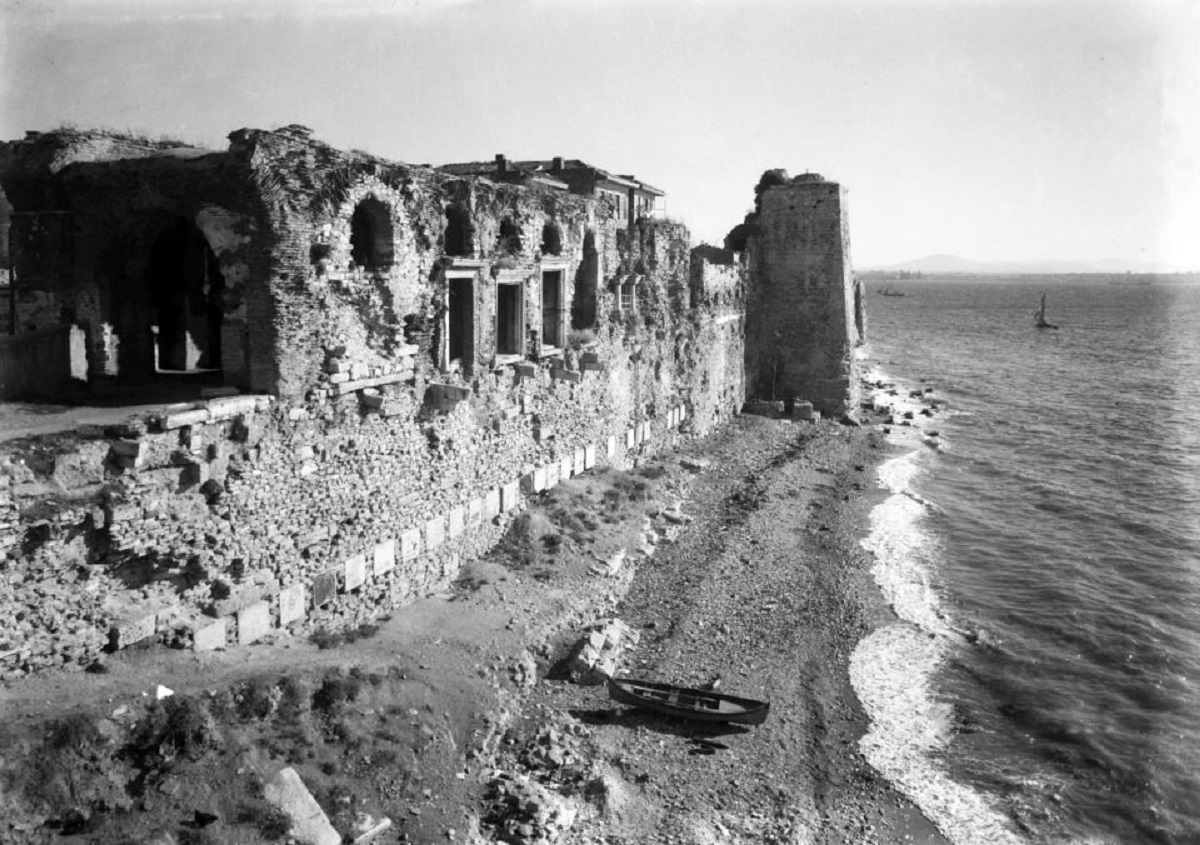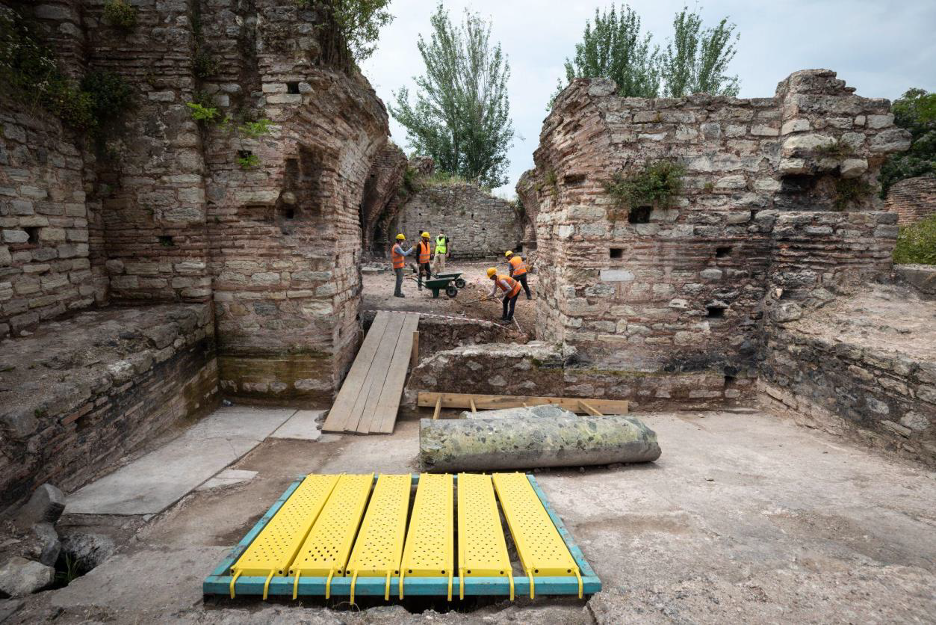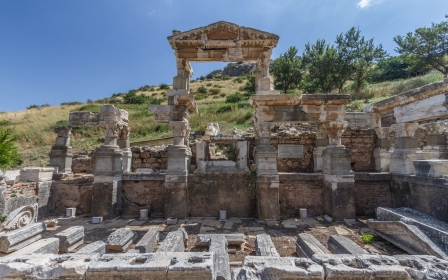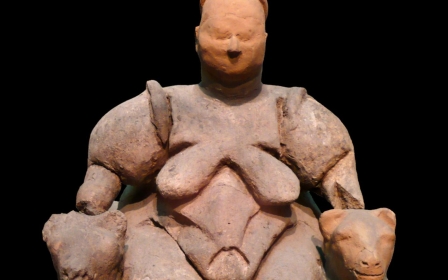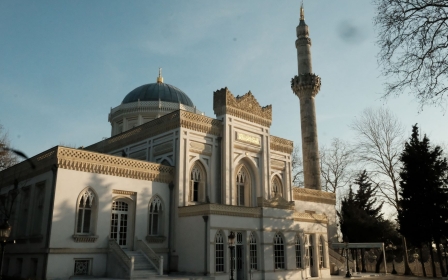Boukoleon: The lost palace of Istanbul
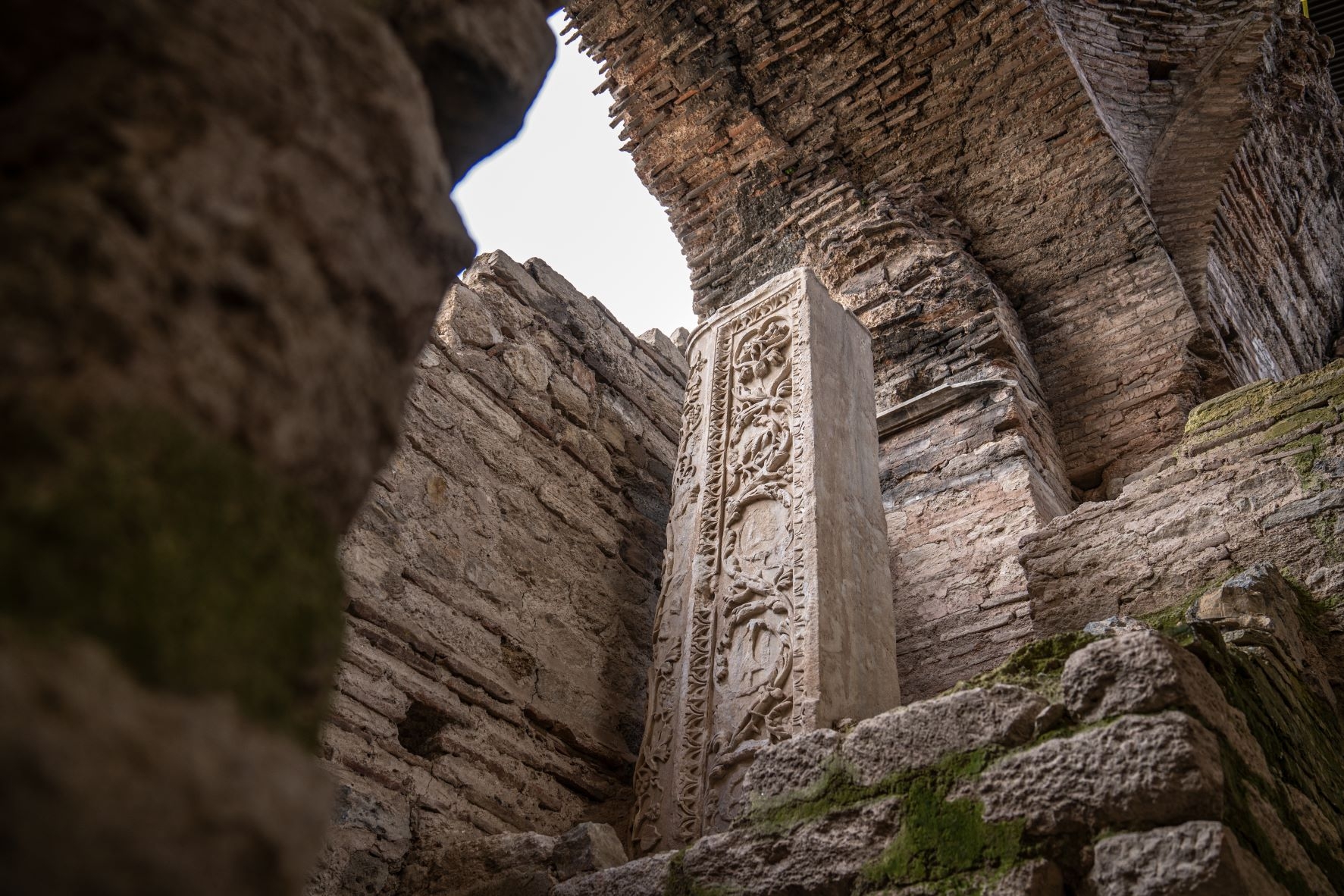
Alongside its mosques, Istanbul is a city known for its palaces. To any visitor, the gigantic but humbly designed Topkapi Palace near the Hagia Sophia and Blue Mosque is a must see.
Across the Golden Horn and in the European district of Besiktas are the Dolmabahce and Ciragan Palaces, both built in the late 19th century.
New MEE newsletter: Jerusalem Dispatch
Sign up to get the latest insights and analysis on Israel-Palestine, alongside Turkey Unpacked and other MEE newsletters
On the other side of the Bosphorus is the Beylerbeyi Palace, another architectural marvel, constructed during the last decades of the Ottoman Empire.
The Ottomans certainly lead the way in having produced the city’s grandest homes, but that somewhat distracts from the fact that they were not the only major dynasty to have ruled Istanbul and have left an architectural legacy.
In equal need of lavish accommodation were Constantinople's Byzantine rulers, who ruled the city for more than a thousand years.
It’s these rulers, which presided over a successor state of the Roman Empire, who have the distinction of designing Istanbul’s oldest palace.
Located along the Marmara Sea, not far from Topkapi Palace, are the remnants of Istanbul’s Boukoleon Palace.
'Imagine reading about Topkapi Palace but never actually seeing much of it except a few sad ruins'
- Scott Kennedy, Byzantine historian
Its name derives from the stone statues that once stood at its entrance; that of a bull (bouc in Byzantine Greek) and lion (leon).
Scott Kennedy, an academic specialising in Byzantine history at the Ankara-based Bilkent University, explained that given centuries of dilapidation, the true scale of the Boukoleon has been lost to history.
“Scholars don't really know much about what the palace looked like except what sources tell us,” he told Middle East Eye.
“Imagine reading about Topkapi Palace but never actually seeing much of it except a few sad ruins.”
The palace itself was part of a greater complex, stretching from the city’s north to its south, and included a Grand Palace, a structure that used to stand somewhere between today’s Blue Mosque and Hagia Sophia.
Several kiosks, churches, cisterns, and other residential structures for the Byzantine elite were also located in the area.
Although the bull statue has been lost to the annals of time, the lion statue has been recovered and now casts its gaze over visitors to Istanbul's Museum of Archaeology.
Dating back to the early fifth century, Boukoleon was constructed during the reign of Theodosius II and used by several Byzantine emperors until the 11th century, when the empire moved its headquarters to the Palace of Blachernae, in contemporary Ayvansaray, situated near the Golden Horn.
Boukoleon’s halls were used to receive guests of the royal household, foreign dignitaries and ambassadors from Muslim polities, all greeted with stunning sea views nearby.
It is even said that the waves of the Marmara sea crashed against the walls of what was a prison within the structure.
The 19th-century British archaeologist Theodore Bent was convinced that the cells beneath the palace were used for such a purpose. Further archaeological findings have added weight to this idea. For example, there is even a belief that Emperor Isaac II Angelos, who died in 1204, was chained there after a political intrigue.
The palace’s lighthouse still welcomes ships that pass the abandoned building before sailing on into the Bosporus.
Istanbul’s Ottoman rulers found their own uses for the palace grounds and the area near the lighthouse, building homes that enjoyed views of the Marmara.
Reviving the ruins
In one late 19th century description by Bent, the lighthouse is described as being “surrounded by a garden full of Byzantine remains”.
He also mentions “marbles beautifully sculptured, and capitals of pillars,” adding: “The sole occupant of this building was an old Turk.”
A Greek man from the island of Chios, Alexander George Paspatis, accompanied Bent during his 1887 visit. An "old Turk" allowed them to examine parts of the palace but the pair were prevented from examining the ruins in detail by other, less welcoming, residents of the area.
Despite those difficulties in accessing the structure, it is an act of fortune that Boukoleon has survived to the extent it has.
Earthquakes, eventual royal indifference, and the construction of a railway line in 1873 directly underneath it could all have triggered its complete demise.
The construction of a coastal road in the 1960s also separated the palace from the seashore, the edge of which touched the palace for centuries.
But Boukoleon's era of neglect may finally be at an end, as Istanbul Metropolitan Municipality (IBB) announced in 2018 that the site would be renovated and turned into an open-air museum; perhaps tempted by the idea of another grand tourist attraction in a city already rich with them.
Teams made up of archaeologists, excavators and art historians have already unearthed and identified hundreds of historic artefacts.
At the time of publication, around 227 objects dated from different periods have been found.
Among the haul is Istanbul’s oldest fountain, estimated to be some 1,600 years old, and found in October last year.
Nevertheless, those early successes should not belie the difficulty of the task.
“We had to remove a 10-metre deep layer of debris from the palace,” said Mahir Polat, deputy general secretary of the IBB.
“This project is of significance for not only shedding light on the history of Byzantium but also for giving Istanbul a new tourism destination,” added Polat.
‘Lost puzzle’
According to Bilkent University’s Kennedy, the project is of significance for what it reveals about day-to-day life under Byzantine rule.
“The recent discovery of the fountain and cistern are like finding a small puzzle piece that helps you see the lost puzzle a little bit better,” he said.
“In this case, they will help us better understand what life was like in the palace and how emperors and their servants obtained the most basic but most essential thing of all - water.”
The works will also shed light on one of Istanbul’s most dramatic episodes; the Crusader sacking of then-Constantinople in 1204.
Christian knights nominally loyal to the Latin church used Boukoleon as a base during their unwelcome stay at the height of divisions between Byzantium and the Christian warriors.
While ostensibly tasked with recapturing territory held by Muslims in the Holy Land, these European warriors instead turned on their fellow Christians.
During the assault, the Crusaders looted the city for three days and razed many monuments to the ground.
Researchers are hopeful that traces of the fighting might be uncovered during their excavations.
The excavations are not without controversies. Among Turks, there is worry that Greek nationalists spurred by the belief that they are the true inheritors of the Byzantine legacy, including Istanbul, will use the findings to strengthen their ideological claims on the city.
But the experts themselves say that trying to unbind the threads that make up the city’s heritage is impossible.
IBB’s Polat says: “We don’t distinguish between antiquity, Byzantine, Ottoman or early Republican eras. Cultural heritage is free from ideological and national boundaries.”
Boukoleon may not be the only Byzantine ruin restored to something resembling its former glory.
The IBB is also working on the restoration of the Byzantine walls that once encircled the city.
Known as the Theodosian Walls and dating to the fifth century, the structure once provided security against attack from the Marmara Sea. The walls stretch from the Yedikule district of Istanbul to Fatih, encircling the city.
Most of the structure has already collapsed and the IBB project aims to preserve and consolidate the remains.
IBB’s heritage department also regularly organises trips to renovation sites, where members of the public can talk to archaeologists and experts involved in the revival of the city’s past.
“We want Istanbulites to understand and feel the kind of city they are living in and to see what an incredibly multi-dimensional historical city it is,” Polat said.
Middle East Eye delivers independent and unrivalled coverage and analysis of the Middle East, North Africa and beyond. To learn more about republishing this content and the associated fees, please fill out this form. More about MEE can be found here.


